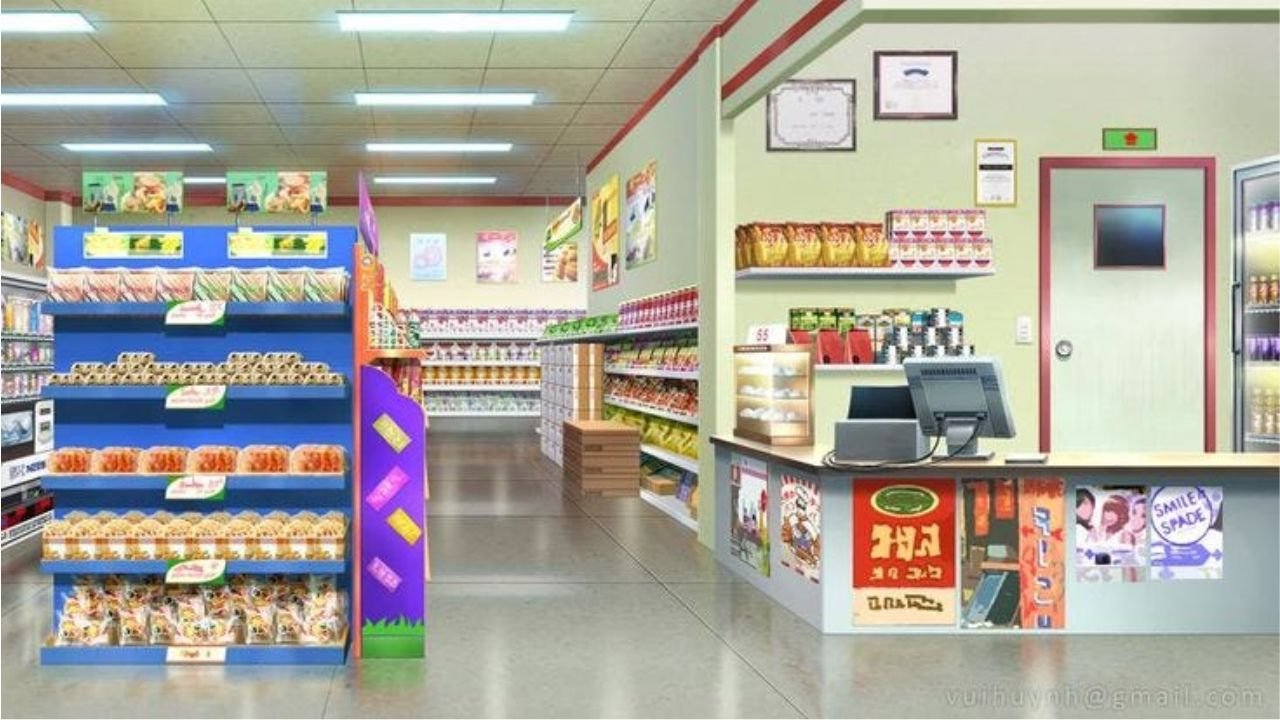The restaurant industry has always been a vibrant and evolving entity, driven by consumer preferences, culinary innovation, and cultural trends. However, a new trend is taking the dining world by storm: the Thestaurant. This novel concept is not just another fleeting fad but a transformative force reshaping the restaurant landscape as we know it. In this comprehensive guide, we will delve into the essence of Thestaurants, explore their rise to popularity, address the challenges they face, and predict where the future might take them.
Thestaurant Concept
Definition and Characteristics of a Thestaurant
A Thestaurant, a portmanteau of “theater” and “restaurant,” is a dining establishment that offers an immersive, theatrical experience alongside its culinary offerings. Unlike traditional restaurants where the focus is primarily on food and service, Thestaurants aim to engage all senses, creating a multi-dimensional experience for diners.
Key Features That Set Thestaurants Apart
Immersive Dining Experience: Thestaurants often incorporate elements such as themed décor, interactive performances, and storytelling to create a unique atmosphere. Every aspect, from the menu design to the staff uniforms, is carefully curated to align with the theme.
High-Quality Cuisine: Despite the emphasis on theatrics, the food quality in Thestaurants is never compromised. Many collaborate with renowned chefs to ensure their culinary offerings are top-notch.
Audience Participation: Guests are not mere spectators but active participants in the experience. This can range from simple interactions with the staff to being part of the storyline or performance.
Technological Integration: Advanced technology, such as augmented reality (AR) and virtual reality (VR), is often used to enhance the dining experience, making it more engaging and memorable.
Exclusive Events: Thestaurants frequently host exclusive events, like themed nights, mystery dinners, and culinary workshops, creating a sense of exclusivity and community.
The Rise of Thestaurants
Analysis of Current Trends and Consumer Demand
Several factors contribute to the rapid rise of Thestaurants:
Desire for Unique Experiences: Modern consumers, particularly millennials and Gen Z, prioritize unique and memorable experiences over material possessions. Thestaurants cater to this demand by offering an unforgettable dining adventure.
Social Media Influence: The visual and interactive nature of Thestaurants makes them highly Instagrammable. Diners love sharing their experiences on social media, which serves as free marketing and attracts more patrons.
Culinary Tourism: As culinary tourism gains popularity, travelers seek out destinations that offer distinctive dining experiences. Thestaurants, with their unique blend of culture, cuisine, and entertainment, become prime attractions.
Technology and Innovation: Advances in technology enable Thestaurants to deliver experiences that were once unimaginable. From holographic projections to interactive tabletops, the possibilities are endless.
Case Studies of Successful Thestaurants
Dining in the Dark – Opaque (Various Locations): Opaque offers a unique sensory experience where guests dine in complete darkness, heightening their other senses. The waitstaff, all of whom are visually impaired, guide diners through the experience, making it both humbling and enlightening.
Murder Mystery Dinners – The Dinner Detective (Multiple Cities): Combining a gourmet meal with a thrilling whodunit, The Dinner Detective engages guests in solving a murder mystery, with actors blending seamlessly among the diners.
Alice in Wonderland Theme – Alice’s Restaurant (Tokyo, Japan): This whimsical restaurant transports guests into the world of Alice in Wonderland, complete with fantastical décor, themed dishes, and character interactions.
Overcoming Challenges
Common Hurdles Faced by Thestaurant Owners
High Operational Costs: The immersive elements of Thestaurants often come with high setup and maintenance costs. From elaborate decorations to hiring performers, the expenses can quickly add up.
Consistency in Quality: Balancing the theatrical aspects with consistently high-quality food and service can be challenging. Both elements must work in harmony to ensure a seamless experience.
Niche Market: While Thestaurants appeal to a specific demographic, they may not attract the broader audience that traditional restaurants do. Finding and retaining the right customer base is crucial.
Regulatory Hurdles: Depending on the country or city, there may be strict regulations regarding live performances, safety standards, and health codes that Thestaurants must navigate.
Strategies for Staying Competitive
Innovative Marketing: Leverage social media, influencer partnerships, and user-generated content to create buzz and attract new customers. Offering limited-time themes or seasonal events can also drive repeat visits.
Collaborations and Partnerships: Partner with local artists, performers, and chefs to keep the experience fresh and exciting. Collaborations can also help share the financial burden and introduce new ideas.
Customer Feedback: Regularly solicit and act on customer feedback. This helps identify areas of improvement and ensures the experience remains relevant and engaging.
Flexible Business Model: Adapt to changing market conditions by offering virtual dining experiences, takeaway options, or pop-up events. Flexibility can help maintain revenue streams during challenging times.
The Future of Thestaurants
Predictions for the Future of Thestaurants
The future of Thestaurants looks promising, with several trends likely to shape their evolution:
Increased Use of Technology: As technology continues to advance, Thestaurants will find new ways to integrate it into their experiences. Expect to see more use of AR, VR, and AI to create even more immersive and personalized dining adventures.
Sustainability and Ethical Practices: With growing awareness around sustainability, Thestaurants will increasingly adopt eco-friendly practices. This could include sourcing locally, reducing waste, and incorporating sustainable materials in their décor.
Health and Wellness Focus: As consumers become more health conscious, Thestaurants will need to offer healthier menu options without compromising on the immersive experience. This could involve innovative cooking techniques and ingredient substitution.
Global Expansion: The Thestaurant trend is likely to expand globally, with new cultural themes and experiences being developed to cater to diverse audiences.
How Technology and Changing Consumer Behaviors May Impact Thestaurant Businesses
Personalization: With data analytics and AI, Thestaurants can offer highly personalized experiences tailored to individual preferences. This could range from customized menus to personalized interactions during the performance.
Remote and Hybrid Experiences: The COVID-19 pandemic has accelerated the adoption of remote and hybrid models. Thestaurants may offer virtual dining experiences or hybrid events, where diners can participate from the comfort of their homes.
Enhanced Safety Measures: Post-pandemic, safety and hygiene will remain top priorities. Thestaurants will need to innovate in terms of contactless interactions, sanitation protocols, and ensuring a safe environment for both guests and staff.
Conclusion
Thestaurants are more than just a passing trend; they represent a significant shift in the dining industry. By combining high-quality cuisine with immersive, multi-sensory experiences, Thestaurants offer a unique value proposition that appeals to modern consumers’ desire for memorable experiences. As technology advances and consumer preferences evolve, Thestaurants are poised to become a staple in the dining landscape.
The journey of a Thestaurant is fraught with challenges, but with the right strategies and a clear understanding of market trends, restaurateurs can thrive in this dynamic space. Whether you’re a foodie looking for your next culinary adventure, a restaurateur seeking inspiration, or an entrepreneur exploring new business opportunities, the Thestaurant phenomenon offers something for everyone.
For those looking to dive deeper into the world of Thestaurants and stay ahead of industry trends, be sure to follow our blog and join our community of food enthusiasts and industry professionals. Together, we can explore the future of dining and celebrate the innovative spirit that drives the Thestaurant revolution.
Frequently Asked Questions
What is a Thestaurant?
A Thestaurant is a unique type of restaurant that combines theatrical elements with dining. Patrons can enjoy high-quality cuisine while being immersed in a themed environment complete with elaborate décor, performances, and interactive experiences.
How do Thestaurants sustain high-quality food and service?
Thestaurants face the challenge of balancing theatrical elements with exceptional food and service. This is typically achieved by hiring experienced chefs and performers, using premium ingredients, and maintaining strict quality control measures to ensure that both aspects are top-notch.
Are Thestaurants suitable for all age groups?
Many Thestaurants are designed to appeal to a wide range of age groups, offering family-friendly themes and interactive elements that delight both children and adults. However, some Thestaurants may have themes or performances more suited to adult audiences, so it’s always best to check before booking.
What are some popular themes for Thestaurants?
Popular themes for Thestaurants vary widely but often include fantasy worlds, historical periods, famous movies or books, and cultural motifs. Examples include medieval banquets, space adventures, and recreations of beloved stories like Alice in Wonderland.
How can I find a Thestaurant near me?
To find a Thestaurant near you, you can search online using terms like “themed restaurants” or “immersive dining experiences” along with your location. Social media, food blogs, and review sites like Yelp or TripAdvisor are also excellent resources for discovering Thestaurants in your area.











